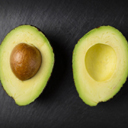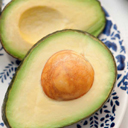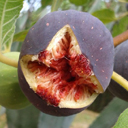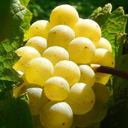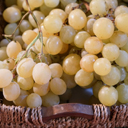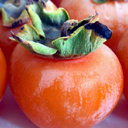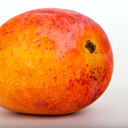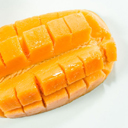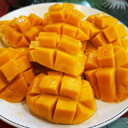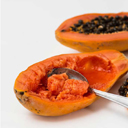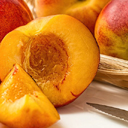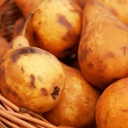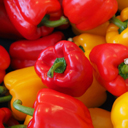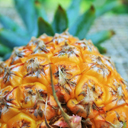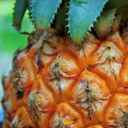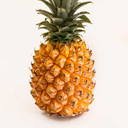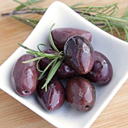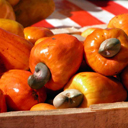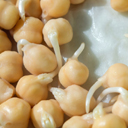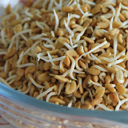Facts
Cooking
Humans are the only creatures on Earth that cook their food. They’re also the only ones who suffer from chronic diseases. No other creatures suffer from allergies, obesity, asthma, heart diseases, diabetes, arthritis, digestion tract diseases or cancer, apart from humans and human fed animals eating processed and thermally destroyed food like products.
Cooking is killing, thermally destroying the food – pasteurisation is above 70°C, cooking around 100°C, baking around 200°C. Thermally destroyed food is not our natural food; it’s very deficient in nutrition and hard to digest. During heat treatment most vitamins and nutrients are destroyed. In around 50 degrees Celsius all enzymes are destroyed.
Digesting is the process that requires most energy. Digesting a raw meal takes between 15 minutes to 2 hours, whilst digesting a thermally destroyed meal can take between 8 or more! A raw vegan creates around half a litre of gastric acid per day, in contrary to a person on cooked diet, who needs to produce 7 litres a day.
Deficiency in enzymes and vitamins, loading and acidifying your body and in fact malnutrition, cause weakness, inflammation and hypoxia of tissues and organs, which leads to exhaustion, lack of energy, vulnerability to infections and diseases like obesity, anaemia, blood disorders, diabetes and many others including cancer.
What are enzymes and why they are important
Enzymes are mainly proteins and they are found in all living organisms. They support biochemical and metabolic reactions in our bodies (i.e. digesting as well as sight and hearing) through acceleration of reactions and energy saving. In short: without enzymes we would not be able to function.
Our body has a stock of enzymes, but it’s not endless. When you eat cooked meals, you do not supply your body with enzymes from the outside, so your body is forced to use its own resources. When we’re young, we do not feel that, but as we get older (around thirty) is when we start to feel the lack of energy and weakness, we don’t feel that good any more, our skin loses its natural elasticity and shine, and we get ill.
Our body and its pH
pH is an acid-alkaline measure. Neutral pH is 7, pH between 0 and 7 is acidic and between 7 and 14 alkaline. The picture below shows an example of pH scale. Our body, and exactly our blood, is constantly aiming for its optimally balanced, slightly alkaline pH around 7.3—7.5. To achieve that, it extracts the nutrients from the food, which has acidic or alkaline values. If there are not enough nutrients to keep this slightly alkaline environment, they are being taken from the stock in our bones and other tissues and organs. When our nutrient reserve is low, our inner biological space becomes vulnerable and prone to chronic diseases. That is when we are being prescribed all sorts of medication and treatment. It’s so much better to change the diet and start incorporating alkaline products into our meals
Examples of acidic foods:
sugar, eggs, fish, meat, cheese, rice, potatoes, pasta, coffee, bread, wine, beer, black tee, chocolate, vinegar, coke and other sodas.
Examples of alkaline foods:
cucumber, chia seeds, figs, sprouts, dates, carrots, beets, almonds, avocados, broccoli, cauliflower, cabbage, leafy greens (kale, spinach, parsley etc.), raisins, lemon, Cayenne pepper, melons (Cantaloupe, Honeydew, Watermelon).
Every person suffering from cancer has too low a pH (acidified body). Dr. Otto Warburg received a Nobel Prize in 1931 for proving that tumour will not survive in alkaline, oxygen rich environment, but it thrives in acidic, oxygen deficient environment.
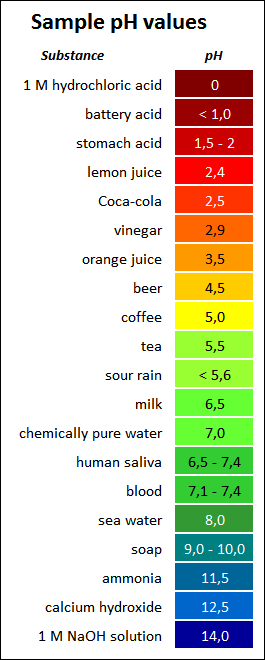
Digestive leucocytosis (“food coma”)
Heat treatment destroys food’s molecules’ structure and our body recognises cooked food as foreign body. Leucocytosis occurs, which means the increase of the number of white blood cells, just like during an infection or inflammation, which is body’s natural self-defence. Thermally destroyed food is of no use for us. Anything that’s consumed, but not digested or stored, must be disposed of as waste. Eating cooked food creates so much waste in our body that our organs of elimination cannot cope and the waste accumulates, leading to insufficiency of tissues and organs. If at least 51% of every meal is raw, leucocytosis will not occur.
What do raw foodists eat
Food without fire—products that have not been thermally destroyed, are raw, unchanged, unprocessed. Also salads, juices, smoothies and foods gently dried in the temperature below 45 degrees Celsius, also raw desserts (chocolate, ice cream, cakes), soups, noodles (see photos).
We avoid food that has been genetically modified, treated with pesticides, other chemicals, packed in plastic. We try to eat local, organic, and seasonal products. We don’t eat refined sugar, refined salt, preservatives, food additives, unnatural sweeteners, colouring and other harmful substances like aspartame, MSG etc.
In other words, we eat food that is biologically appropriate and created by nature, not in a laboratory.

Why do raw foodists eat raw food
Raw plant based products are recognizable and easy to digest, almost fully usable for our body and supply in all nutrients our body needs. Raw meals are consumed in smaller quantity, digested faster and do not use up as much energy as thermally destroyed foods. Raw vegans sleep better, because their bodies regenerate at night, instead wasting energy on digesting. The mind works better as it’s oxygenated, body weight comes back to normal, skin and eyes regain vitality and radiance. Raw vegans are more resistant to infections and diseases, and a possible cold lasts a couple of days instead of a couple of weeks.
Raw vegans do not have digesting problems like heartburn, indigestion, constipation, bloating or food poisoning. Raw plant foods are the best medicine in the words of Hippocrates, the father of modern medicine: “Let food be thy medicine and medicine be thy food”. Our body is our best doctor with self-healing capabilities and all you have to do is not to disturb it in its proper functioning.
Why raw foodists don’t eat meat
Human is not omnivore (all-eater), nor a carnivore (meat-eater). Organisms are classified in terms of physiology, therefore human is a herbivore mammal (a plant-eater), and exactly a fruit-eater. This is a fact, not a matter of speculation or belief. Human teeth are most similar to our original cousins, who were all fruit eaters. The human digesting system is not designed to digest meat, but plants. The human intestines, like all other plant-eaters, are long and complex, whilst intestines of meat-eaters are shorter and simpler, to enable fast disposal of waste after digesting raw meat.
Meat is not tasty—we do not eat it raw, without salt, spices, oil, sauce, but after thermal treatment (roasting, frying) and with the food additives and enhancers, which can also be addictive.
More information on the VIDEO page.
Why raw foodists don’t drink milk
Eating dairy products by humans is not only unnatural, but unhealthy. Contrary to popular opinion, cow’s milk does not strengthen our bones, but weakens them, and in the areas of higher dairy consumption, there’s increased osteoporosis. In the areas where no milk, there’s no osteoporosis or other diseases caused by milk consumption. Cows have strong bones, because they eat grass and that’s where they get i.e. calcium from. Drinking milk flushes the calcium out of our bones. Cow’s milk contains unhealthy saturated fatty acids and hormones, along with antibiotics, sedatives and other medication given to animals and ending up in the stomachs of people consuming meat and dairy. Yoghurt, cheese and butter are concentrated milk products, a specific fat-chemical bomb.
Consumption of dairy is the cause of many diseases like allergies, asthma, eczema, colic, ear infections, acne, child anaemia due to inner intestine bleedings, arthritis, constipation, Crohn’s disease, food poisoning, gallstones and kidney stones, migraine, obesity and tumours. The main cause is the IGF-1 hormone, which accelerates calf’s growth. Only a small increase of IGF-1 in humans increases the risk of many types of cancer. The more dairy you consume, the higher IGF-1 lever you have.
Dairy consumption is mainly widespread in Europe and America. Over 70% people in the whole world do not eat milk products. Majority have natural lactose intolerance (lactose is a milk sugar) and are allergic to casein (milk protein). More about this on the VIDEO page.

Where raw foodists get their protein from
The human need for protein is actually very small. Overconsumption is a lot more harmful for our bodies, than an underconsumption. In practice it’s almost impossible to have too little protein and the actual cases of protein deficiency basically do not exist in our culture. As infants we grow faster than in any other period of our lives, therefore our protein requirement is highest at this particular point. However our mother’s milk has very low protein content between 1 and 4%, depending on the age of infant (the percentage depends on the infant’s stage of development). This is not a coincidence, that fruits contain roughly the same percentage of protein between 1 to 6%. Furthermore the amino acids are the important part, not the protein. Protein, that we consume, must be broken down into amino acids to enable digestion and absorption. Consuming plant products we absorb high quantities of amino acids without wasting energy on braking down the protein.
Cooked food addiction
Eating thermally destroyed food is an addiction, like smoking cigarettes, alcoholism etc. Since our childhood we are being made addicted to foods full of sugar, food additives enhancing taste and flavour, preservatives and colouring. This is not hunger, but our emotional addiction to food and our false located expectations about it, that food should serve us as entertainment or comfort, motivates us to prepare meals according to complicated recipes. The true hunger requires only nutrient rich, uncooked, biologically appropriate food. During stepping away from cooked food, a withdrawal syndrome may occur, same as when quitting cigarettes or alcohol, which only proves how unnatural and harmful cooked food is for our bodies.
Along with detoxifying from cooked food, addictions to other drugs pass away at the same time, our health improves, our body heals itself from diseases and comes back to the biologically natural weight.
More in the section VIDEO.
Basics
RAW
Raw food is food without fire. Raw food products that have not been thermally damaged (by cooking, baking, frying, stewing, pasteurization, etc.), are unchanged, not industrially processed, or only minimally processed (using a food processor, blender, juicer), never heated above 42 degrees Celsius.
Is everything labelled RAW actually raw? The word RAW is not a term reserved for people who eat raw food. Raw means not only uncooked.
The word RAW is not protected by law, it is not a proper name, and has no clear definition, which means that it can be used as an advertising slogan or a marketing trick.
Some products labelled RAW (bars, chocolates, pasta, etc.) are not raw at all—they are simply generally less processed than other products on the market. When in doubt it is best to contact the manufacturer directly.
Foods on the market, processed, finished products (in packets, bags, cans, jars, bottles, cartons, etc.) are not raw—they are pasteurised or cooked, with the addition of chemicals, preservatives, packaged in a modified atmosphere. Apart from fresh fruit and vegetables it is difficult to find raw, unprocessed food in a grocery shop.
When shopping, bear in mind that some products, including “fresh” ones, may, for example, have been irradiated and are therefore dead and lacking in nutritional value. Depending on the country, these may include not only dried mushrooms, dried vegetables and dried spices, but also “fresh” potatoes, onions, garlic and mushrooms. In case of imported products it depends on the legal regulations of a given country. The purpose of food irradiation is to inhibit spoilage and maintain fresh appearance for a longer time. For example, fresh strawberries spoil within a few days—when irradiated they do not spoil for several weeks.
Sulphurisation is another method of preserving food. The purpose of sulphurisation is to maintain the “pretty appearance” of dried and fresh fruit (and vegetables) by adding sulphur dioxide, which binds to the phenols in the flesh, to prevent them from naturally combining with enzymes. Sulphur dioxide (E220) is a toxic gas that can cause breathing difficulties, irritation of the airways, bronchospasm, facial swelling, rash, asthma, changes in lung function, worsening of heart defects, and can damage the development of the fetus. Not only juices, purées, wine, pickles, but also dried fruit and vegetables may be sulfured, e.g. “fresh” lychee from Madagaskar or dried and sulphured apricots (unsulphured dried apricots are brown, not bright orange!).
“The longer the shelf life, the shorter yours.”
For the average food producer/seller earnings are a priority, and the longer the shelf life, the greater the profit, hence fewer losses. This is the reason for drying in high temperature, the use of preservatives and food irradiation.
Raw food can also be bought in online shops—list on the page SHOPLIST.
In order to have a 100% guarantee that something is 100% raw, you have to prepare it yourself, or preferably grow it yourself.
Raw vs. Organic
Raw and Organic are two completely separate concepts. Organic doesn't have to be raw, raw doesn't have to be organic.
Organic certificate is for products from ecologically controlled cultivation, that are at least 95% produced without the use of traditional pesticides, artificial fertilizers, chemicals, GMO (in case of plants).
Names organicbio(logical) or eco(logical) are trade marks. Organic production logo in the European Union (green leaf) can only be appear on products that have been granted an organic food certificate.
Is there a certificate that guarantees raw food? The Rawfood Association has been operating in Europe since December 2018 awarding the reallyraw certificate to products that meet the criteria of transport and storage (the product and its ingredients) below 45°C during processing, transport and storage. These products must be natural, chemical-free. They cannot be synthetic, irradiated or GMO.
An additional requirement of the association is that the products are organic—have a BIO certificate. More information on the Rawfood Association website.
Raw food & living food
Living food and raw food are two different things. Raw food is not always living food, living food is not always raw food.
Raw foods are basically products that are not thermally destroyed by pasteurization, boiling, frying, baking etc. These foods can be preserved (more information below under ↓ “Dehydrating” and ↓ “Freezing”) and will remain raw, but no longer alive.
Living foods are foods that are alive when eaten:
- raw fruits and vegetables freshly picked or up to about 48 hours after picking
- raw, growing sprouts and grasses (more below in the section ↓ “Activating and sprouting”)
- raw, activated nuts and seeds (more below in the ↓ “Activating and sprouting” section)
- fermented foods—unpasteurized after fermentation (more below in the section ↓ “Fermentation”)
Every day after picking, the plant begins to lose valuable nutrients for us.
A few days after picking the raw fruit—more precisely, its flesh—is no longer a living food, but its seeds are alive.
Raw cabbage lying in the store days or weeks after being picked is no longer alive. However, if we make sauerkraut out of it (without pasteurization!), it will be both raw and alive, thanks to the bacterial cultures formed during fermentation.
Even if we do not have our own garden or balcony, we can grow sprouts and grasses (wheat grass, barley grass) at home all year round. In shops you can buy herbs and even lettuces in pots. It is best to buy vegetables and fruits whole, not peeled or cut.
WARNING! Some “living” products are sold as RAW even though they are not raw. These are, for example, cheese and yoghurt made from unraw nuts, soy sauce and miso made from cooked seeds (more information below in ↓ “Spices and other products”). Thanks to fermentation, these products become “living” food again, but they are no longer raw, because their ingredients were previously thermally destroyed. Fermentation does not reverse denaturation. Thermal treatment destroys the molecular structure irreversibly. Despite this, these products are sometimes advertised as RAW, which misleads consumers.
Fruit
How to eat fruit? First and foremost—ripe! And how to know if the fruit is ripe? First of all by colour, but also by texture and aroma, and lastly by taste. Once you know the taste of ripe fruit, you will no longer want to eat them unripe. Perhaps the fruit you once thought distasteful was simply unripe?
Ripe fruit are—thanks to carotenoids and anthocyanins—yellow, orange, red, purple. The green colour results from the presence of chlorophyll, characterises unripe fruit and is its natural camouflage. Unripe fruit is unfit for consumption, is not fully developed, it has not broken down chlorophyll, has not converted the starch into sugar, has not produced all the nutrients, it acidifies the body and can even be toxic. We know full well that the more red, the more ripe, better and tastier the strawberries are. And how about other fruit?
green bananas are unripe, ripenening bananas are yellow, and fully ripe bananas are yellow with brown spots
green pineapples are unripe and will not ripen after picking because they are non-climacteric (explanation below); ripe pineapples are golden, yellow-orange and have a distinct, sweet smell and taste, their core is—in very ripe fruit—soft and edible; unlike unripe pineapples they do not cause burning or reddening of the oral mucosa when eaten
the green ones are unripe and the ripe ones are yellow
green are unripe and sour, whereas ripe grapes are yellow or yellow-orange (golden) and very sweet
green and hard avocados are unripe; the flesh of a ripe avocado is more yellow than green, is spreadableand squeezed in a hand (see a video with avocado)
green olives are simply unripe; fresh, ripe olives are purple (the darker, the more mature—similar to plums). The so-called “black” olives are not only not raw, but also unripe. These are unripe green olives that have been “blackened”—cured in an alkaline solution, treated with oxygen, then with an iron compound (ferrous gluconate) and cooked. Ripe raw olives (dried or marinated) can be purchased online—see the SHOPLIST.
the ripe ones are sweet, soft and juicy, can be cut in half with bare hands, their flesh is not green or greenish, but golden yellow, yellow-orange
ripe can be split up by tearing with bare hands
hard and crunchy pears are unripe; ripe pears are soft, juicy and sweet
Of course, there are exceptions to every rule. There are fruit varieties, which remain green/greenish even though they are ripe. Then other aspects such as softness, smell, colour and consistency of the flesh and taste must be taken into account.
Vegetables
Did you know that peppers, cucumbers, tomatoes, pumpkins and olives are actually fruits? They grow from flowers and contain seeds (just like other fruits), but we call them vegetables and do not add them to fruit salads.
Most vegetables can be eaten raw. Apart from those we already know from sandwiches and salads the following vegetables can also be eaten raw: cauliflower, broccoli, brussels sprouts, courgette, yam (sweet potato), corn and many more. It is easier to list the vegetables that are not edible raw:
- common potatoes (edible raw are: sweet potatoes, jicama, yam)
- most of the legumes: beans, green beans, broad beans, etc. (fresh peas, sprouted Mung beans, sprouted chickpeas, sprouted soybeans are edible raw)
One of the undervalued but very important are green leafy vegetables. Greens are very valuable mainly due to their chlorophyll content. Lettuce, spinach, kale, lamb's lettuce and, above all, wild herbs like nettle, dandelion, starling and even carrot, kohlrabi, broccoli leaves are just some examples of valuable sources of chlorophyll, minerals and vitamins.They can be eaten in a salad, as pesto, juice or smoothie.
For more information, see ↓“Green Smoothie” below.
Climacterium
Fresh fruit and vegetables are alive, full of solar energy and light and, like any living organism, breathe. Breathing is giving and taking up carbon dioxide and oxygen. Due to breathing, ethylene production and harvest time, fruits (and vegetables) can be divided into so-called climacteric and non-climacteric. Ethylene—a plant‘s ripening hormone and a natural product of plant metabolism—is a gas that is extracted from climacteric fruits and influences the acceleration of ripening.
Non-climacteric are e.g. strawberries, raspberries, blackberries, currants, cherries, pineapples, lychees, grapes, citruses, watermelons, cucumbers, peppers, aubergines. These fruits do not produce ethylene (or produce very little ethylene) and will not ripen if picked before they reach full ripeness.
Climacteric are e.g. apples, pears, plums, apricots, nectarines, peaches, blueberries, figs, bananas, mangoes, papayas, cherimoyas, kaki, kiwi, avocados, tomatoes. These fruits can be picked before they are fully ripe and have the ability to produce a lot of ethylene, which allows them to continue the ripening process even after harvesting.
WARNING! Climacteric fruits may not ripen if:
- they were harvested too early
- they were stored at too low temperatures and chilling injury occured
Chilling injury
Chilling injury is an inhibition of metabolic and biochemical processes through exposure to low temperatures. This applies to both ripe and unripe fruit. The symptoms of chilling injury are discoloration, internal cracks, irreversible inhibition of ripening and growth, loss of taste, decay.
Example: storing bananas for a few hours at a temperature below around +13°C may lead to chilling injury. Such bananas can be recognized by their grey-blue peel.
Hybrids vs. GMO
Are seedless fruits genetically modified? What is the difference between hybrids and GMO?
Hybrids arise from the crossing of two similar species. Species crossbreeding has been practised since the beginning of agriculture and is also found in nature in plants and animals without human intervention. Cross-pollination of two trees of similar species results in a hybrid tree that produces fruit with the most desirable characteristics.
Grapefruit, orange, tangerine, pomelo were created by crossing citruses. Strawberry is a cross between wild strawberry and Chilean strawberry. Almost all of today’s fruits and vegetables are the result of crossbreeding and selective breeding, and differ drastically from their ancient wild counterparts (see how fruits and vegetables used to look.)
GMO genetically modified organisms are created by combining DNA molecules from different sources, often unrelated species, in order to change the organism’s gene in laboratory conditions through bioengineering. This way you can grow fruits and vegetables that already contain “pesticides” that cannot be washed off. An example is Hawaiian papaya resistant to viruses, but also corn, soybeans and other vegetables and fruits resistant to pests, bacteria and fungi.
Green Smoothie
The idea for the green smoothie came from the observation of wild chimpanzees, whose genes are about 99.4% like ours. Chimpanzees eat mainly fruit (about 50%) and greens (about 40%), the rest is tree bark, seeds and insects.
Studies show that on average we chew every bite about 10 times, and we should chew about 30–40 times. To absorb as much chlorophyll as from a smoothie or juice, we would have to chew every bite over 70 times.
Eating so much greens can be overwhelming, which is why a green smoothie was invented. The Green Smoothie is made of fruit and greens, and water. At the beginning it is recommended to add more fruit and less greens to gradually get used to the taste of chlorophyll.
The secret is in simplicity–a green smoothie is a quick and easy to make meal. Things worth remembering:
- one or two kinds of fresh greens (see ↑ “Vegetables” above)
- one or more types of fresh ripe fruit (see ↑ “Fruit” above)
- at least one fruit, which is a good source of soluble fiber (pear, mango, banana, plum, grape, strawberry, blueberry, citrus)
Sample smoothies:
- romaine lettuce + banana + strawberry
- spinach + mango
- kale + orange
- nettle + pear
- basil + wild blueberry
- coriander + pineapple + banana
- dandelion + pear + plum
- carrot greens + grapes
Is frozen fruit added to smoothies? More in the section ↓ “Freezing”.
Juice or smoothie
We can eat fruit and vegetables, but also drink them. Eating requires thorough chewing, and this natural skill has been lost in us through generations of eating mainly thermally processed, denatured “food” swallowed in a hurry. Each bite should be chewed several dozen times and swallowed in a liquefied form, mixed with saliva, because digestion begins in the mouth, where digestive enzymes are secreted (e.g. ptyalin in saliva).
Some people ask themselves what is better: juice or smoothie. We are, of course, talking about juices that are freshly squeezed with a slow-juicer (vertical or horizontal, single or twin gear) and smoothies freshly made with a high speed blender.
Juice is produced by separating and removing the pulp, which is insoluble fibre. This facilitates digestion and accelerates the absorption of highly concentrated nutrients.
Smoothie contains both soluble and insoluble fiber, which slows down the digestive process, provides a more sustained release of nutrients and gives a feeling of fullness for longer.
Advantages (+) and disadvantages (–) of juices and smoothies:
Juice:
+ immediate release of nutrients into the bloodstream
+ rest for the digestive system, which allows it to grow and repair at the cellular level
+ consumption of more vegetables/fruits
+ hydrating the body (see ↓ Water below)
– not a whole food (pulp separation)
Smoothie:
+ aids digestion
+ helps to remove toxins through the digestive system
+ slower release of sugar
+ regulates blood sugar
+ satisfy the feeling of hunger
– rapid oxidation
– shorter “shelf life”
It is recommended to consume juices and smoothies immediately after making them due to oxidation and loss of nutritional value, especially vitamins.
If this is not possible, keep the juices and smoothies in the fridge, in a tightly closed glass vessel (jar or glass bottle) fully filled up (as little air as possible between the surface of the liquid and the cap/lid).
Smoothie – consume within a maximum of 24 hours.
Juice from a centrifugal juiceer – consume within a maximum of 24 hours.
Juice from a slow-juicer – consume within a maximum of 3 days.
For more information about blenders and juicers, see KITCHEN.
Examples of using juice pulp: salad topping, compost, duck food, dehydrated crackers.
WARNING! Juices and Smoothie should be consumed very slowly. It is recommended to drink through a straw (preferably glass) or eat with a spoon, hold the liquid in the mouth before swallowing, and even chew. Our brain also registers the degree of satiation by the amount of chewing!
Both juices and smoothies are used in liquid therapies/fasts.
Due to their benefits, it is not possible to say clearly what is better and you can consume both juices and smoothies every day. It all depends on personal preferences, possibilities, kitchen equipment, type of food you have and the current needs of the body.
Nuts & seeds
Are all nuts and seeds raw? “Unroasted”, “unsalted” or “natural” does not mean raw. Even buying shelled nuts and seeds, unfortunately, does not guarantee that they have not been dried at too high temperatures (see below under ↓ Dehydrating). In case of any doubts, it is best to contact the manufacturer. And even better, if possible, to harvest yourself.
It is easy to check whether e.g. sunflower seeds are raw, because they will germinate within a few days (see below under ↓ Activating and sprouting). It is more difficult with nuts—they germinate for months and not in domestic conditions.
Special attention should be paid to imported, exotic nuts and seeds:
commonly known as nuts, they are seeds growing outside of the fruit of a cashew tree (related to mango). Production on an industrial scale consists in subjecting cashews to thermal treatment (usually a bath in hot oil or steaming) to soften very hard shells in order make it easier and faster to shell them. The generally available cashews are unfortunately not raw and can be cheaper than e.g. walnuts.
Raw cashews are shelled by hand and without heat treatment. This is a time-consuming process, which makes raw cashews (usually also organic/bio) much more expensive than other nuts.
Keimling, a German company selling raw food, shows the production process of raw cashew butter from harvesting, through drying and shelling in Indonesia: https://youtu.be/Apc3vMHB_SU
Another video is from Lifefood: “Can Cashew Nuts Be Truly Raw?”: https://youtu.be/6jAXUtmL0BA
Raw cashews, raw cashew butter and other raw products can be purchased in online stores. For a list of online stores, see SHOPS—please read the descriptions as some stores also sell products that are not raw!
those from the USA are usually pasteurized. In case of doubt, it is best to contact the manufacturer, as different countries have different laws regarding the quality and condition of imported and exported products (pasteurization, irradiation). Blanched almonds or almond flakes are not raw products. In online stores you can buy raw almonds from Spain, Italy or Australia. The skin can be easily removed by yourself after soaking the almonds in water for several hours.
are the seeds of a plant from the legume family growing in underground pods. They are generally available roasted, even those in the shell, as improperly stored seeds exposed to mould can produce aflatoxins. Raw peanuts are available in online stores—list in SHOPS section.
despite the very hard shell, they are very sensitive and after splitting they need to be stored in a cool place, e.g. in the refrigerator.
Do you like eating freshly cracked nuts? Or do you not eat nuts or seeds because you find them hard to digest? Be sure to read the next section: ↓ Activation and sprouting.
Activating and sprouting
Nuts, seeds, grains have natural defence mechanisms that enable them to survive unfavourable conditions (cold, heat, lack of water). However, we can remove these toxic substances by imitating spring. Activation is simply soaking nuts, seeds, and grains in water. Activation lasts, depending on the type of seed, from a few to several hours, e.g. with a pinch of pink rock salt or lemon juice.
Benefits of activating nuts and seeds:
- removing/reducing phytic acid
- removing/reducing of tannins
- neutralization of enzyme inhibitors (digestive and metabolic enzymes)
- production of beneficial enzymes
- increasing the amount of vitamins, especially those from group B
- breaking down gluten
- aiding digestion
- improving the bioavailability and bioavailability of proteins
Sprouting is the natural way of turning a seed into a vegetable and one of the best and most nutrient-rich forms of food. Denatured, baked, irradiated or dried at excessively high temperatures, seeds do not have the ability to germinate as they are dead.
Most seeds are soaked for about 8 hours, e.g. overnight (e.g. sunflower seeds), but some need more than 12 hours (cereals, some nuts), and some only need a few hours (cashews, buckwheat). Hemp seeds do not require soaking.
After soaking, pour out the water and rinse the nuts/seeds thoroughly. After that you can:
- eat as they are, add to a salad or mix with water for a sauce / dip (e.g. nuts, almonds, sunflower seeds, pumpkin seeds, hemp seeds, sesame seeds)
- dehydrate to store for later or grind into flour or to make peanut butter
- germinate further, rinsing 2—3 times a day with water to grow sprouts (e.g. buckwheat, rye, mung beans, chickpeas, lentil sprouts), green sprouts (e.g. alpha-alpha, broccoli, radishes, watercress sprouts) or micro-greens (e.g. sunflower, peas, wheat grass, barley grass).
Plant-based “dairy”
Milk, cream, yoghurt and cheese can be made from plants such as nuts and seeds. All you need is purified water and a high-speed blender (more about kitchen appliances in the KITCHEN section). The amount of water determines the consistency and type of the final product. Use more water to make milk, less water for yoghurt or a dip, even less water for a cheese. Some nuts and seeds are delicate and neutral in flavor (cashews, macadamia, almonds), others are more intense and will have a pronounced impact on taste, fragrance and texture.
It's best to start with as little water as possible and gradually add more to get the required consistency and final product. Don't forget to activate and rinse! (see section above: ↑ “Activating and sprouting”).
Examples:
base: e.g. almonds, cashews, macadamia or other nuts, sesame, sunflower or hemp seeds, grains, or the flesh of a young coconut + water in an amount several times greater than the amount of seeds (in a ratio of e.g. 1:3 or 1:4). Finished plant milk can be strained through gauze or a cotton cloth to get rid of unmixed nuts/grains. Nut pulp can be used, to produce raw crackers, breads or cakes.
Sweetener (e.g. dates) and/or spices (vanilla, cinnamon, etc.) can be added to plant milk. Plant milk can also be made using nut butter or soaked coconut flakes.
base: e.g. nuts,or seeds or young coconut pulp + water. Sour cream is obtained by adding fresh lemon juice or unpasteurized vinegar (e.g. apple cider vinegar) and (e.g. pink) rock salt. To make a sweet cream, you can add dates or other raw sweetener.
when making sour cream, you can add garlic, cucumber, and after blending—fresh spices, herbs (e.g. dill). Hummus can be made from sunflower seeds and water with the garlic and sesame seeds or tahini (sesame butter).
base: e.g. cashews, almonds or macadamia nuts + water, oil, lemon juice or vinegar, a bit of sweetener (agave syrup or dates), salt. Mayonnaise and other sauces/dips can also be made, e.g. based on avocado.
base: e.g. cashews, macadamia, almonds or other nuts, or young coconut pulp + water. The consistency is a bit thicker than sour cream. More below in the section ↓ “Fermentation.
spreadable, fermented, cottage cheese, mozzarella or feta cheese. Base: e.g. macadamia, cashews, almonds, pine nuts + water. Plant-based cheeses are obtained using a very small amount of water in relation to nuts. It is important to use a high-speed blender to obtain a homogeneous consistency. Adding a small amount of psyllium husks will thicken the mass, thanks to which you can get a melted cheese-like consistency, or if you use a larger amount, you can get a sliceable mozzarella. More information below in the section ↓ “Fermentation.
I encourage you to experiment. Many inspirations and recipes with exact proportions in the RECIPES section.
See images on the page PHOTO.
Mushrooms
Some edible mushrooms can also be eaten raw: closed cup mushrooms, portobello, oyster mushrooms, chanterelles or shiitake. The tea mushroom is used to produce a fermented drink called kombucha.
Fermentation
Most common fermented foods are sauerkraut, cucumbers in brine and pickled cucumbers, beetroot kvaas, kimchi, kombucha, cheeses and yoghurts. Fermentation is one of the methods of food preservation, which also has many other benefits:
- supporting the bacterial flora of the large intestine
- naturally increases the content of vitamins A and C in fermented food
- removing toxins from the body
- natural reduction of sugar in fermented foods
- high content of anti-cancer vitamin K2
- aiding digestion by producing digestive enzymes
- supporting the immune system
By pickling and fermenting ourselves, we guarantee that what we eat is raw and has not been in contact with harmful chemicals or plastic. Most store bought products are pasteurized and with the addition of chemicals, preservatives. Pasteurization kills live cultures of bacteria, which is what is most valuable in fermented foods. If in doubt, it is best to contact the manufacturer.
Sauerkraut is one of the easiest fermented food to make. All you need is cabbage and salt (preferably rock/crystal salt). Cabbage is to be shredded, sprinkled with salt and kneaded until it begins to release juice. Then it is put in a jar together with the juice and covered so that the cabbage does not flow out above the layer of juice, put it in a warm place to ferment. Do not fill the jars to the brim as space is needed for the gas that comes out during fermentation. In the first days, you can slightly unscrew the lid once a day and let the excess gas out. After about two weeks, the sauerkraut is ready and can be stored for several months. After opening, store in the refrigerator.
For the fermentation of kefir, yoghurt or cheese you can use bacterial starter cultures in powder or homemade sauerkraut juice. Mix everything in a blender to a uniform mass of the required consistency and then transfer it to the jar. Leave the jar in a warm place for a day or two. Air bubbles can be seen during fermentation. Then put the jar in the fridge.
For making a firmer cheese, excess water can be drained by squeezing the cheese through gauze or a cotton cloth. Fot that you need to add more powder cultures (or more cabbage juice) to the blender, as you are squeezing some of it out. Cheese can be seasoned with rock/crystal salt, garlic powder, onion powder, herbs, nutritional yeast. (Nutritional yeast is not a raw product, as it is pasteurized. It is being used as a spice in vegan and raw food cuisine, to give a more cheesy taste).
When fermenting, hygiene and sterility are important—jars should sterilize in boiling water!
Dehydrating
Raisins were created by accident around 2000 before our era when a bunch of grapes dried out in the sun. Drying, or dehydration, is one method of preserving food by removing water. Drying at low temperatures is time consuming and can take several hours or even several days. By raising the temperature, the drying time is shortened, which speeds up production. Foods produced on an industrial scale are dried at high temperatures. Often with the addition of chemicals, preservatives, packed in the so-called modified atmosphere or sulphurized (e.g. dried apricots sulphurized are orange, non-sulfured are brown). If in doubt, it is best to contact the manufacturer.
Drying at high temperatures denatures the food and kills the enzymes and most of the nutrients. To prolong the life of food, dry it at a sufficiently low temperature. This temperature depends on the water content of the food and the time the food is in contact with the temperature. Sources give general drying temperatures up to approx 42—47°C while preserving enzymes.
Appropriate temperature and air circulation are needed for drying. The thinner the layer, the shorter the drying time and the lower the risk of mold, therefore it is recommended to cut fruits and vegetables into slices. Food can be dried in different ways:
- naturally: in the open air, in the sun, but also at home in a dry, airy place—on a drying net or on a thread (this is how mushrooms and herbs used to be dried)
- in a dehydrator, i.e. in a food dryer (with the option of setting the temperature below 45°C), alternatively at another source of heat, e.g. in winter, in the heating season by the radiator
(Some people dry food in the oven with the option of setting the temperature below 45°C and with the oven door slightly openedt—but this is a more expensive and risky method.)
One of the benefits of raw food is eating fresh, easily digestible, and hydrating foods. Dried food is dehydrated, so it can draw water out of the body and lead to constipation if eaten over a long period of time and in large quantities. When consuming dried food, remember to additionally hydrate your body.
Freezing
Freezing is one of the methods of food storage and preservation. Lowering the temperature of food slows down physical, biochemical and microbiological changes (read more about ↑ Fruit and ↑ Chillling injury).
Are frozen foods raw? Unfortunately, not. Mass-produced frozen vegetables, greens, mushrooms and some fruits are usually blanched, i.e. subjected to heat treatment (steam, immersion in boiling water or salt or sugar solution, or microwave heating), the purpose of which is primarily to destroy enzymes, preserve color and appearance of the product. In addition (mainly with fruit) chemicals, sugar, antioxidants can also be used. If in doubt, it is best to contact the manufacturer.
By freezing food ourselves, we guarantee that it is raw and without chemicals. When making your own frozen food, keep in mind that it won't last as long as industrial frozen foods. Low temperatures slow food spoilage, but not as much as food treated with chemicals or heat.
Vegetables and fruits consist mostly of water (up to 97%). When water freezes, it expands in volume. Freezing products with a high water content cracks open the cell walls. That's why after thawing the food is mushy or jelly-like—physically the same process took place as during blending.
Frozen foods, just as like dried products, are not optimal foods, so they should not be the basis of a diet.
Spices and other products
Not only is sugar not raw, but it’s also unhealthy. Table sugar has nothing to do with the sugar in fruit. Industrial sugar is an isolated and chemically purified sweetener that acidifies the body. Consuming such sugar leads to insulin resistance, raises blood pressure and can damage the kidneys, and lead to chronic inflammation, disrupts metabolism, leads to abdominal obesity, leaky gut. Sugar contains many calories and no nutritional value, is bad for teeth, causes high blood pressure, kidney disease, diabetes, liver disease, heart and circulatory system diseases, Alzheimer's disease, may contribute to cancer.
Industrial sugar also comes disguised under the names of glucose syrup and is added to most packaged products. Isolated sugar affects the brain in a similar way to cocaine and is addictive. Artificial sweeteners are just as unhealthy.
Sugar in fresh, ripe fruit is not thermally or chemically damaged, it is structured, natural and, above all, wholesome, because it is consumed with the whole fruit, i.e. together with natural enzymes, vitamins, fiber, amino acids and structured water naturally found in fruit. Ripe fruits provide the body with the right amount of sugar. Fresh unsweetened medjool dates contain over 60% sugar—they are natural caramels!
Similar to sugar, table salt is an unnatural, unwholesome, highly processed, bleached, isolated chemical with added preservatives and other substances (e.g. fluorine), devoid of minerals that is added to most finished products. Such salt causes blood pressure spikes, water and fluid retention, aggravates and can even cause chronic imbalances in the body such as diabetes, gout, obesity, kidney, thyroid and liver problems, high blood pressure, heart disease, muscle spasms, edema, stroke, heart failure, premenstrual syndrome, and even serious nervous system disorders such as anxiety and depression.
Salt is part of our body—our blood is a one per cent salt solution, which corresponds to the salt concentration of prehistoric seas.
Natural salt (sea salt or “Himalayan” salt) contains, in addition to sodium chloride, also minerals and trace elements.
- sea salt—is made by evaporating seawater, is minimally or unprocessed and retains trace amounts of minerals such as magnesium, potassium, calcium and other nutrients.
- pink rock/crystal salt (also called Himalayan) – despite its name, it does not come from the Himalayas, but from mines mainly in Pakistan, but also in Poland. It is unprocessed and contains about 84 minerals. Some of the benefits of consuming pink rock salt: supports thyroid and adrenal function, supports overall hormonal balance in men and women, supports metabolism, produces proper stomach acid, helps balance blood sugar levels, reduces muscle spasms, has antihistamine properties.
Celery has a high sodium content (over 30%) and is used as a natural salt substitute. - Kala namak — Ayurvedic black salt — traditionally used in Indian cuisine — is used in vegan and raw food dishes due to its smell imitating cooked egg. Kala namak is not a raw food. According to the ancient Ayurvedic method, black salt is produced in India by heating raw salt with traditional ingredients in clay vessels for 18–24 hours at a temperature of 801–1000 °C. The result is pink-brown crystals that smell of sulfur.
Cold pressed or Extra Virgin is not a guarantee of raw quality. Temperature was not used to heat the product during production, but high temperatures may be generated during pressing/squeezing. If in doubt, it is best to contact the manufacturer.
Olive oil is often mixed with other, cheap vegetable oils and colored green with chlorophyll.
You can buy raw oils from online stores or make your own. Manual and electric oil juicers/presses are available for sale. The Sana Juicer offers an oil extraction attachment. You can make your own oil from sunflower seeds, pumpkin, linseed, hemp, sesame, etc.
It is usually made from roasted nuts, as it facilitates the secretion of oil and affects the taste of the product. You can buy raw peanut butters in online stores or make your own using a blender, food processor or horizontal squeezer. Stone roller presses are also available for purchase.
They should be dried at low temperatures. Unfortunately, spices and herbs produced on a mass scale are dried at high temperatures (approx. 80°C). It's best to contact the manufacturer, buy from an online store that sells raw products, or dry it yourself if you want a 100% guarantee of raw quality.
Raw rice is not edible. Rice products (rice noodles, rice paper) are not raw—they are made from cooked rice. Sprouted wild rice can be eaten raw.
It’s not raw. Raw soybeans are edible in sprouted form. Soy sauce products are made from cooked soybeans, which are then fermented. Bottled soy sauce may be called Tamari or Shoyu. If the word Nama (Nama Tamari, Nama Shoyu) is in the name, it usually means that the sauce is not pasteurized. Nama soy sauce is not raw (raw food), but it is alive (living food).
It's not raw. Miso is made mainly from soybeans, but also, for example, from chickpeas, adzuki beans, cereals, rice. These seeds are first boiled and then fermented. If the finished miso has not been pasteurized, it would be considered living food, but not raw food. Fermentation does not reverse denaturation.
Konjac root/tuber products are not raw. The cognac root is ground, mixed with slaked lime (calcium hydroxide) and water to form a gel. After cooking, it is formed into the shape of rice, noodles, e.g. shirataki noodles, etc.
Water
Our body consists mostly of water, which is why hydration and the quality of the water supplied are so important.
The best quality water is:
- Organic/molecular water: the most natural and bioavailable—found in fruits, vegetables, leafy greens, freshly squeezed juices; it is also the young coconut water.
- Spring water: collected directly from the spring (not from a plastic bottle!).
- Purified water: unfortunately, tap water has a very high threshold of impurities and the so-called mineral water even higher. There are various types of filters available in the market. Unfortunately, they do not guarantee the removal of impurities from tap water, which contains questionable substances, drug and cosmetic residues, poisons and germs. In addition, it is dead, inorganic water that is not well absorbed by our body. The reverse osmosis system and steam distillation have the best water purification results. On the Internet you can find more information about reverse osmosis filters and steam distillers. Purified water can be remineralized using special mineral powders or mineral drops. Alternatively, you can add some natural, unrefined salt. The water can be revitalized with e.g. gemstones or a whirlpool funnel (hyperbolic funnel).
Please note! Distilled water in canisters sold on the market comes from chemical distillation and is not suitable for consumption!
The myth of drinking 2 litres of water a day.
Many well known organisations and media recommend drinking at least 2 litres or 6—8 glasses of water per day. This notion originates from a misinterpretation. In 1945, the U.S. Food and Nutrition Board of the National Research Council published a water intake recommendation of 1 mL/kcal energy expended. This recommendation translates to 2 litres which is equivalent to 8 glasses. But there’s no mention of actually drinking pure water. The recommendation refers to intake of total water, i.e., water from all food and beverage sources combined. The equivalency with 8 glasses appears to have been confused with advice to drink 8 glasses of plain water each day.
Hydrate your body with raw fruits and vegetables that contain cellular and alkaline water.
The image below shows the percentage water content in raw edible plants:
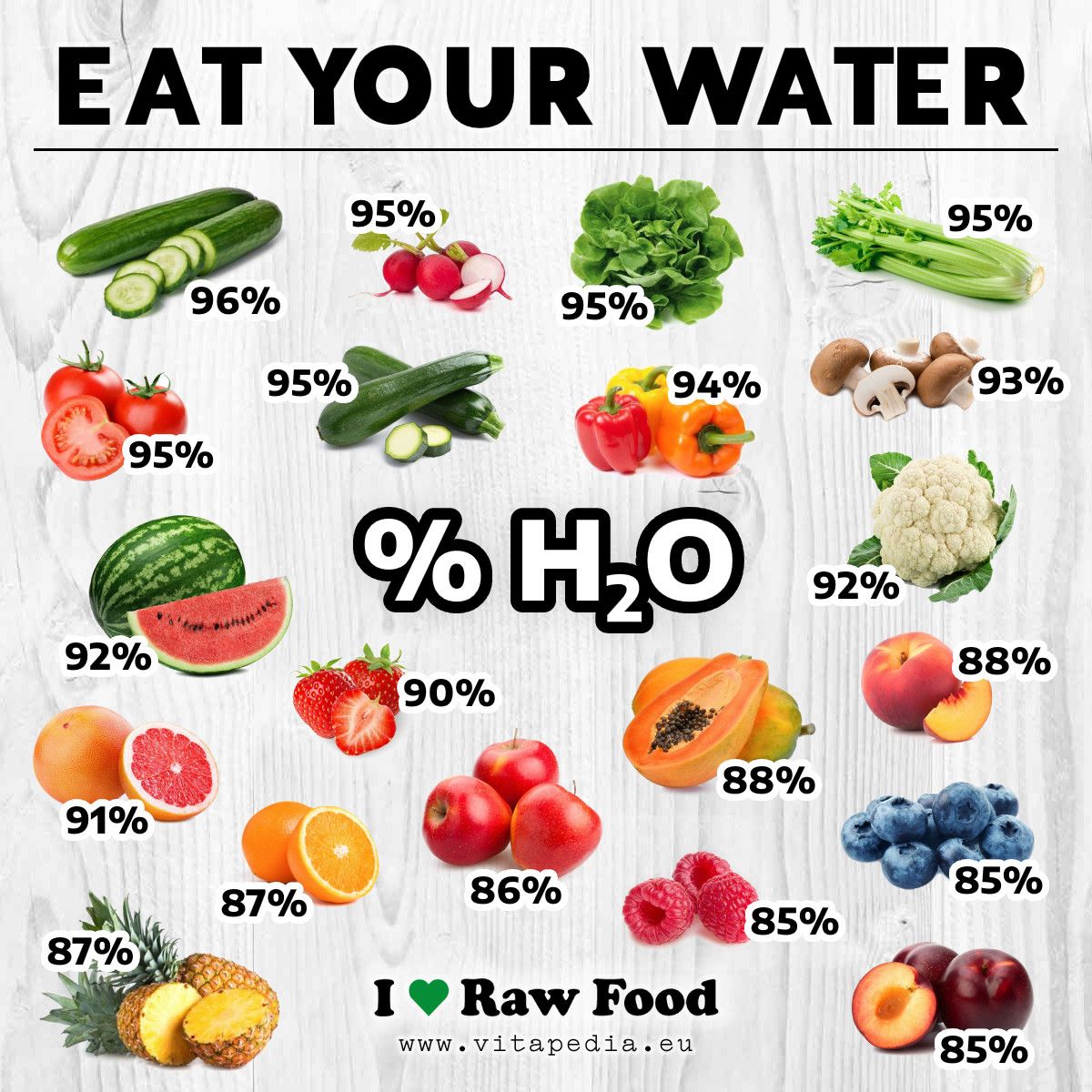
On the image below: tap water = approx. 160 ppm, after steam distillation = approx. 1 ppm (ppm = parts per milion).
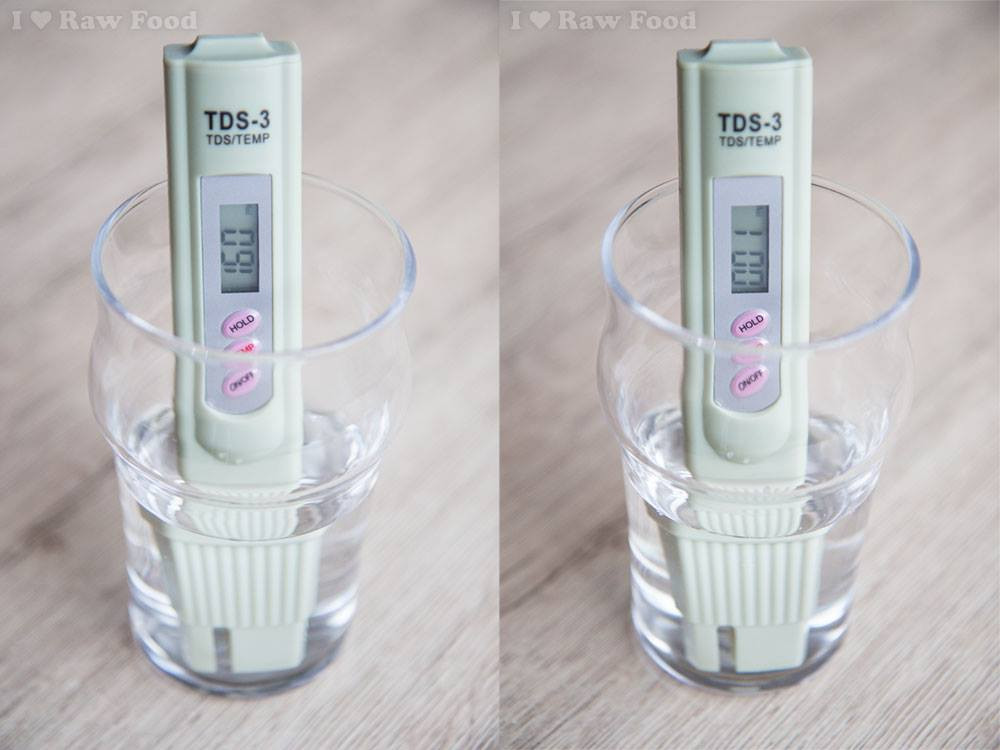
The image below shows the the sediment left after water steam distillation in a period of approximately six months.
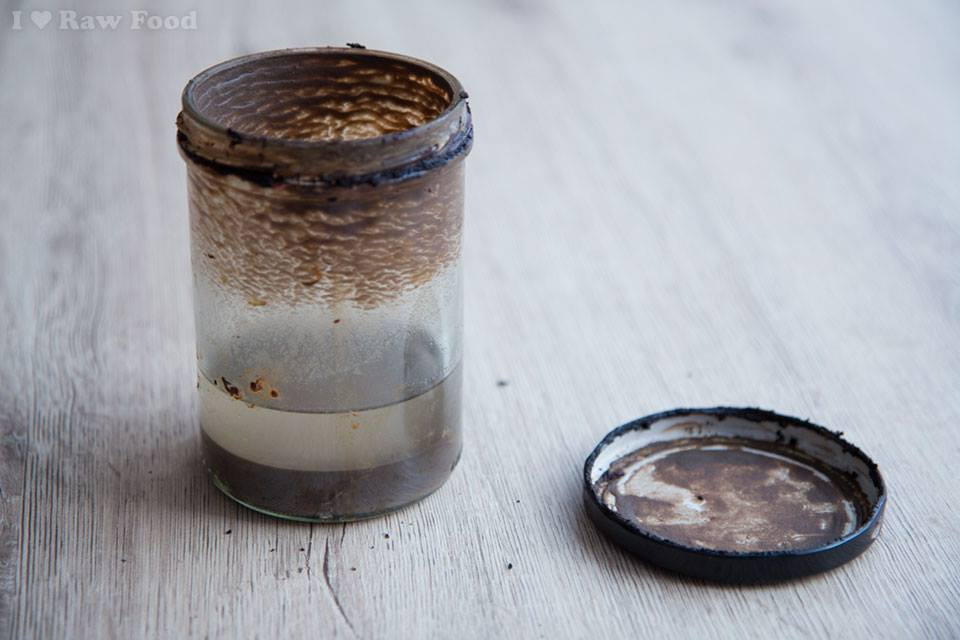
Afterword
Today’s food is highly processed and shows us how far we have strayed from nature and natural food.
„Do you live to eat or to you eat to live?”
Life doesn’t revolve around food. Food is not the most important thing, but it is one of the pillars of health, next to the sun, water, air, rest and movement. Not everyone has a goal to be 100% raw, but it is worth having knowledge and consciously making healthier choices.
A variety of trends/stages can be observed among people who eat raw food. There are people who eat or strive for a 100% raw diet, but also people who eat mostly or only partially raw. People counting calories. People counting the content of protein, fat and carbohydrates in meals. People who follow the rules of combining and not combining food groups. People who do not eat raw cocoa because it is also a stimulant, or do not eat mucus-forming products, even the raw ones. There are people who take dietary supplements and people who don't. People who eat only local and seasonal vegetables and fruits, or people who eat tropical fruits all year round. People who prefer smoothies and people who prefer juices. There are people who do not eat any, even the minimally processed products (nothing dried or frozen, no smoothies or juices, no combining/mixing products, only mono-meals—separately, only plants, mainly fruit, only organic and ripe) which is so-called. paradise food also known as paradise diet. There are people practicing fasting, intermittent fasting, juice- or water-fasting. There are also people who do not eat anything because they do not have to, because they draw their life energy from another source (prana, bretarianism).
I encourage you to observe yourself, deepen your knowledge, look for answers and to collect your own experiences and pursue your own path and pace to health and happiness with empathy and understanding for yourself and others.
Visit our Blog. Subscribe to our free Newsletter and never miss new content.

